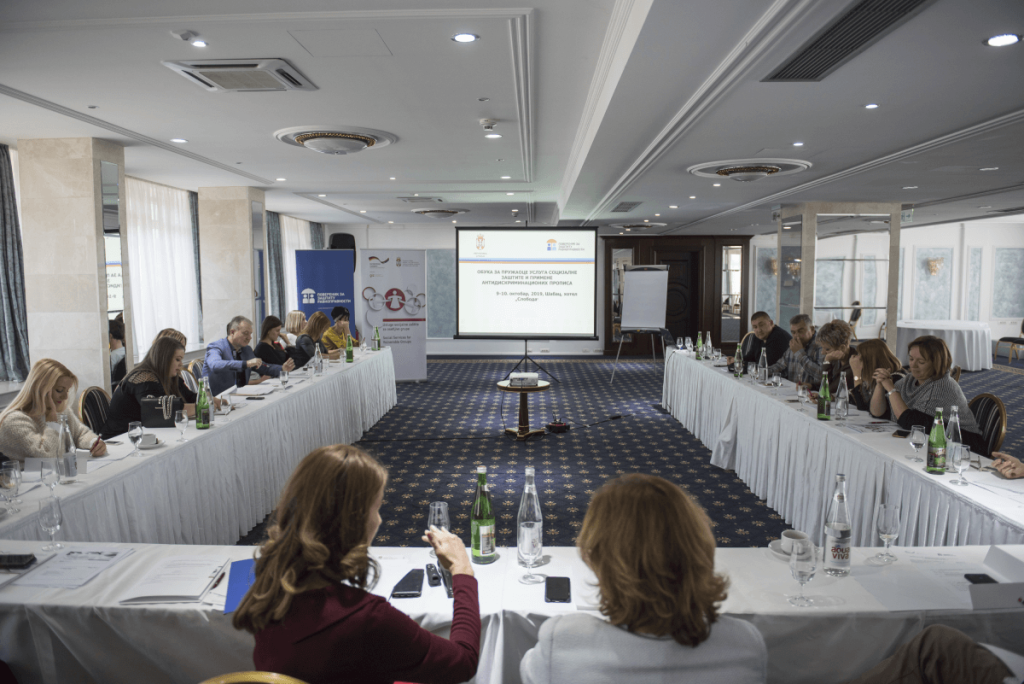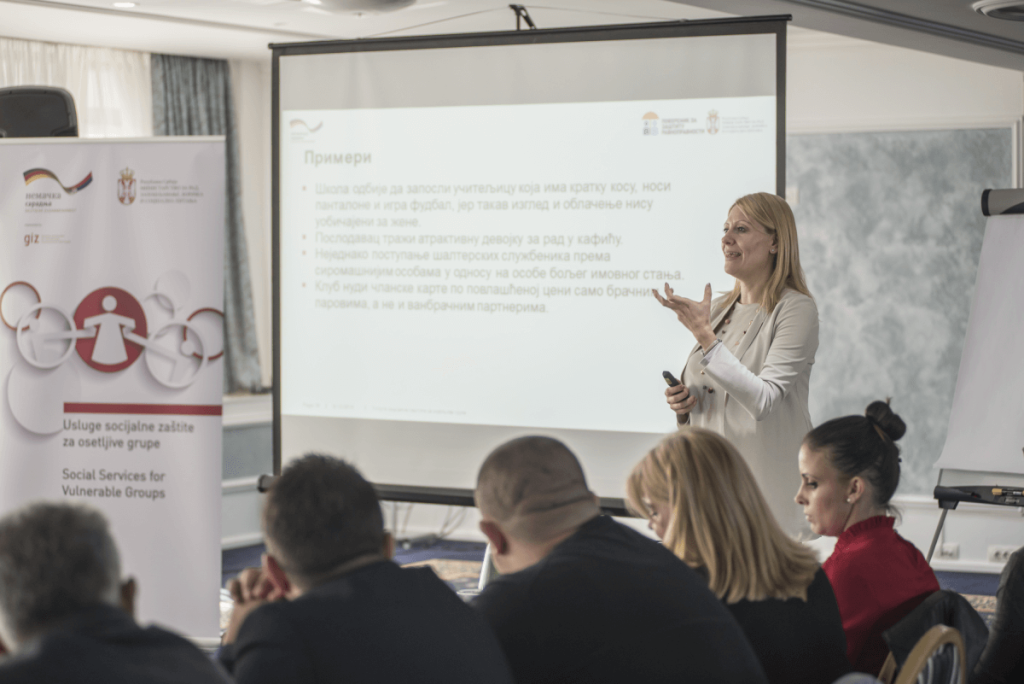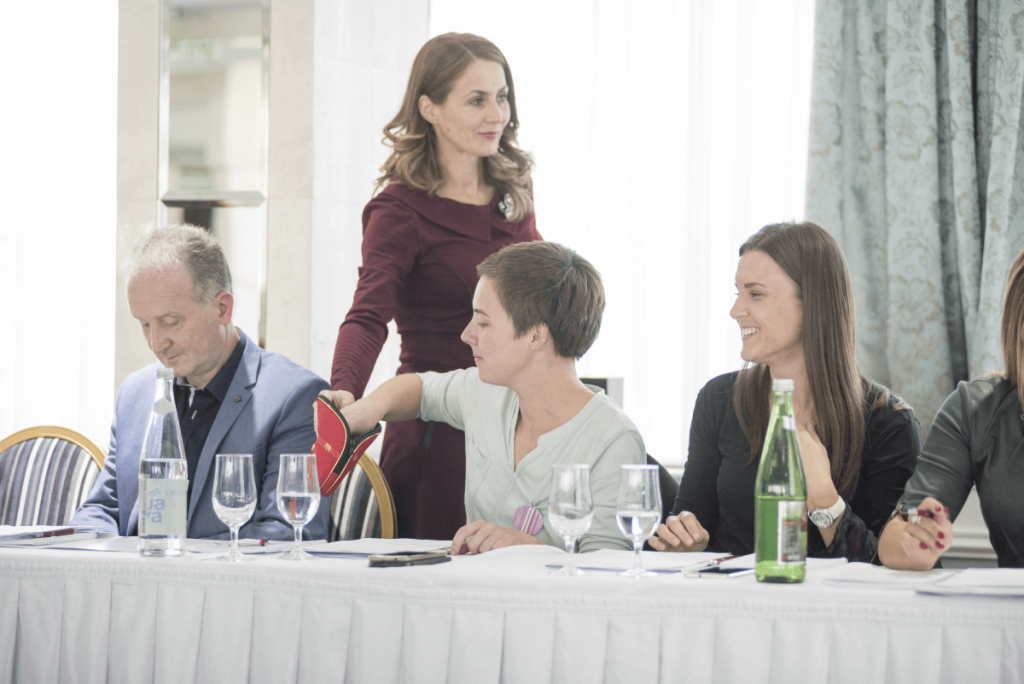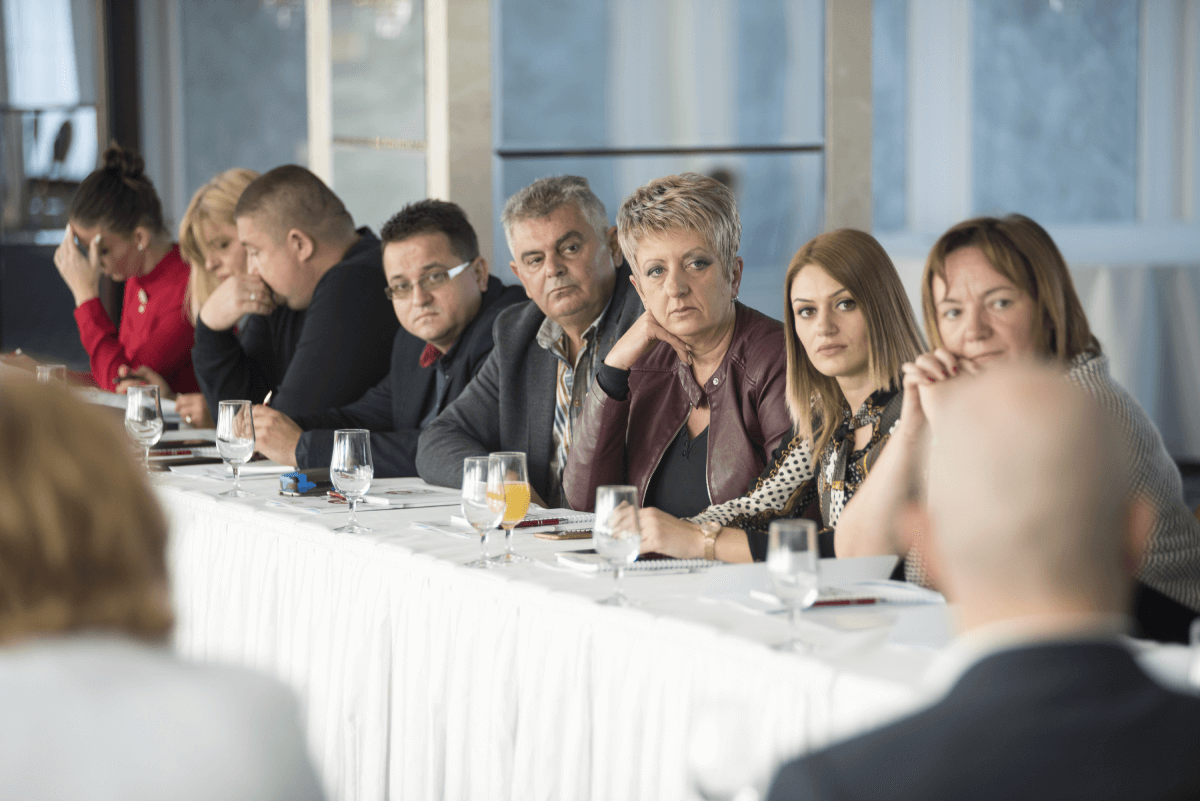An elementary school plans a visit to Museum of illusions. A child who has autism is not allowed to come because the school thinks he will not be able to take part in activities in the museum.

Is this discrimination? If yes, why? What can be done and who is in charge if we experience discrimination?
These were the topics of the training antidiscrimination in social protection, held in Šabac, from October 9-10, 2019. Professionals from centers for social work and social service providers from 15 municipalities got to know the most common forms of discrimination, personal traits based on which people can be discriminated (age, sex, ethnicity, income and alike) and the role prejudices and stereotypes play. An interesting part was the presentation of rulings of the European Court of Human Rights, illustrated by Ivana Krstić, professor the Faculty of Law at the University of Belgrade.

The situation in Serbia was presented by Brankica Janković, Commissioner for protection of equality. If we would describe discrimination in one word, we would say: it’s unequal treatment of the equal and equal treatment of the unequal, stated the commissioner. She presented examples of direct and indirect discrimination and cases of discrimination at workplace – the most frequently reported form of discrimination. Discrimination at the workplace and mobbing were topics of the second day of the training. Dejan Kostić, expert in the field of discrimination and labor law, explained how to recognize and what to do in case of mobbing – an old practice, with a new name, says Kostić.

This is one in series of activities that aims to improve the provision of social services – to make them more efficient, accessible and in line with citizens’ needs, concluded Alexandra Hilbig, leader of the project Social Services for Vulnerable Groups. This is the German-Serbian development cooperation project, implemented by GIZ.


